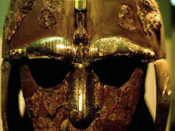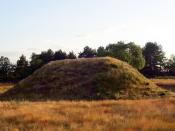What can the study of grave-goods tell us about the nature of society?
Europe From Late Antiquity to Early Middle Ages
Cormac Griffin
A1177407
The Anglo-Saxon ship, Sutton Hoo, was discovered in 1939 in a burial mound near Woodbridge, Suffolk, in southeast England. Initially excavated in this year and again in 1965-7, the grave-goods discovered were both extensive and revealing of a number of facets of Anglo-Saxon life of the 7th century including everyday life, religion, customs, myths and legends, artefacts and buildings, and indeed even aspects of the Christian conversion. Sutton Hoo provides virtually the only evidence for the development of kingship during this period, and is the key source for the moment when the Anglo-Saxons ceased to be tribal and began to form kingdoms�. This brief tutorial paper outlines the key discoveries made at Sutton Hoo and highlights the inferences which can be drawn from these objects.
It concludes that these grave-goods discoveries can greatly assist our understanding of the nature of historical societies.
Sutton Hoo is a burial ground dating from the early 7th century AD, and was probably the main burial ground of the pagan Kings of East Anglia�. Accordingly, the grave-goods are unlikely to be representative of the 'ordinary' person and the 'everyday' objects of Anglo-Saxon households of the time. Rather, they highlight the type of possessions the elite of society - the wealthy, the powerful and the royal - had and the importance to this elite of ceremonies, entertainment and feasting. The burial in Mound 1 at Sutton Hoo is one of a small number of ancient burials, which can be linked to an individual person, someone "who was so powerful in his lifetime to be interred with ceremony in a ship nearly 90 feet in length surrounded by so much golden splendour"�...


